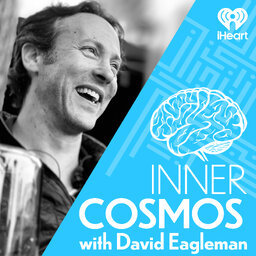Ep11 "What does dreaming have to do with the rotation of the planet?"
Why are some of the best musicians blind? Can blind people learn how to echolocate, like a bat? What do your nightly dreams have to do with the rotation of the planet? Once we find alien life on other planets, should we expect that aliens have dreams at night? Find out why dreaming might be the strange lovechild of brain plasticity.
 Inner Cosmos with David Eagleman
Inner Cosmos with David Eagleman


